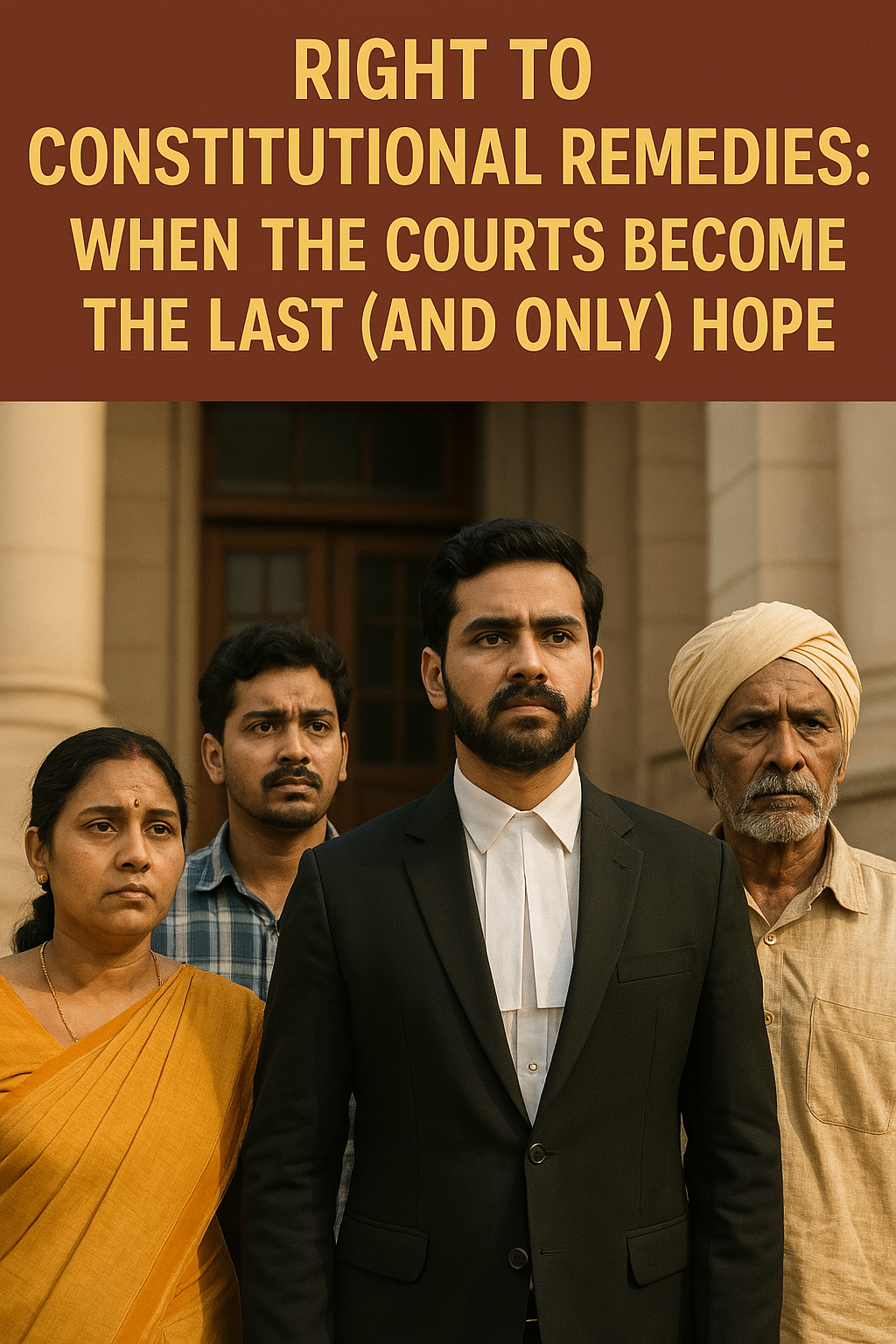Writ of Habeas Corpus
Writ of Habeas Corpus – Explained
1. Meaning of Habeas Corpus
"Habeas Corpus" is a Latin term that means "you may have the body".
It is one of the most important constitutional remedies provided to individuals to protect personal liberty against unlawful detention or imprisonment.
2. Constitutional Provision
The Writ of Habeas Corpus is provided under Article 32 (for the Supreme Court) and Article 226 (for High Courts) of the Indian Constitution.
It can be issued against the State or any private individual who has illegally detained another person.
3. Purpose of the Writ
The main purpose of this writ is:
To secure the release of a person who is detained unlawfully.
To ensure personal freedom and protect against arbitrary arrests.
To uphold the Rule of Law and Fundamental Rights, particularly Article 21 – Right to Life and Personal Liberty.
4. Who Can File the Writ?
The detained person can file the petition.
Any person on behalf of the detained person (friend, family, lawyer, or even a stranger acting in public interest) can file it, especially if the detainee is not in a position to approach the court.
5. Against Whom Can It Be Filed?
It can be filed against police authorities, government officials, or private individuals responsible for unlawful detention.
6. Scope and Characteristics
The writ commands the detaining authority to produce the person before the court and justify the detention.
If the detention is found to be illegal, the court will order immediate release.
It can be invoked even during emergencies, except when Article 21 is suspended (e.g., during a National Emergency under Article 359).
The writ is not available if the person is detained under a lawful court order.
7. Grounds for Issuing Habeas Corpus
The writ will be issued if:
The detention is without authority of law.
The procedure for arrest/detention has not been followed.
The detainee has not been presented before a magistrate within 24 hours.
Constitutional safeguards under Article 22 are violated.
8. Important Case Laws
✅ 1. A.K. Gopalan v. State of Madras (1950)
Facts: Gopalan, a communist leader, was detained under the Preventive Detention Act.
Held: The Supreme Court upheld the detention but took a narrow view of personal liberty.
Significance: Though the petition failed, it was a key early case in the evolution of Article 21.
✅ 2. Kanu Sanyal v. District Magistrate, Darjeeling (1973)
Held: The Supreme Court ruled that the purpose of Habeas Corpus is not merely to produce the body but to examine the legality of detention.
Significance: Reinforced the broad and protective nature of the writ.
✅ 3. Sunil Batra v. Delhi Administration (1978)
Facts: A prisoner was subjected to inhuman treatment.
Held: The Court allowed the writ of Habeas Corpus to examine prison conditions and custodial torture.
Significance: Expanded the scope of the writ to include protection of rights even inside prisons.
✅ 4. Sheela Barse v. State of Maharashtra (1983)
Facts: A journalist filed a writ on behalf of women prisoners who were illegally detained and abused.
Held: The Supreme Court ordered investigation and release of illegally detained women.
Significance: Recognized public interest litigation (PIL) for Habeas Corpus.
✅ 5. ADM Jabalpur v. Shivkant Shukla (1976) – (Also known as the Habeas Corpus Case)
Facts: During Emergency, several people were detained without trial.
Held: The majority of the Supreme Court ruled that right to life and liberty could be suspended during emergency.
Significance: This judgment is widely criticized. It was later overruled in the case of K.S. Puttaswamy v. Union of India (2017) and is no longer good law.
9. Limitations of the Writ
Not available if detention is legal and done by a competent court order.
Suspended during certain emergencies, if Article 21 is suspended.
May be denied if the person is detained under valid preventive detention law with due procedure.
10. Importance of Habeas Corpus
It is called the “great writ of liberty”.
Acts as a powerful check on arbitrary arrest and illegal detention.
Upholds constitutional values and civil liberties.
Prevents misuse of state power and custodial violence.
✅ Summary Table
| Aspect | Details |
|---|---|
| Meaning | “You may have the body” – Produce the detained person before court |
| Constitutional Basis | Article 32 (Supreme Court) & Article 226 (High Courts) |
| Purpose | To challenge unlawful detention and ensure release |
| Filed By | Detainee or anyone on their behalf |
| Against | Police, Government officials, or private individuals |
| Key Cases | A.K. Gopalan, Kanu Sanyal, Sunil Batra, Sheela Barse, ADM Jabalpur |
| Limitations | Not available for lawful detention; limited during emergency (with conditions) |
| Nature | Protective, speedy, and remedial in nature |
11. Conclusion
The Writ of Habeas Corpus is a cornerstone of personal liberty in democratic governance. It provides a


















0 comments